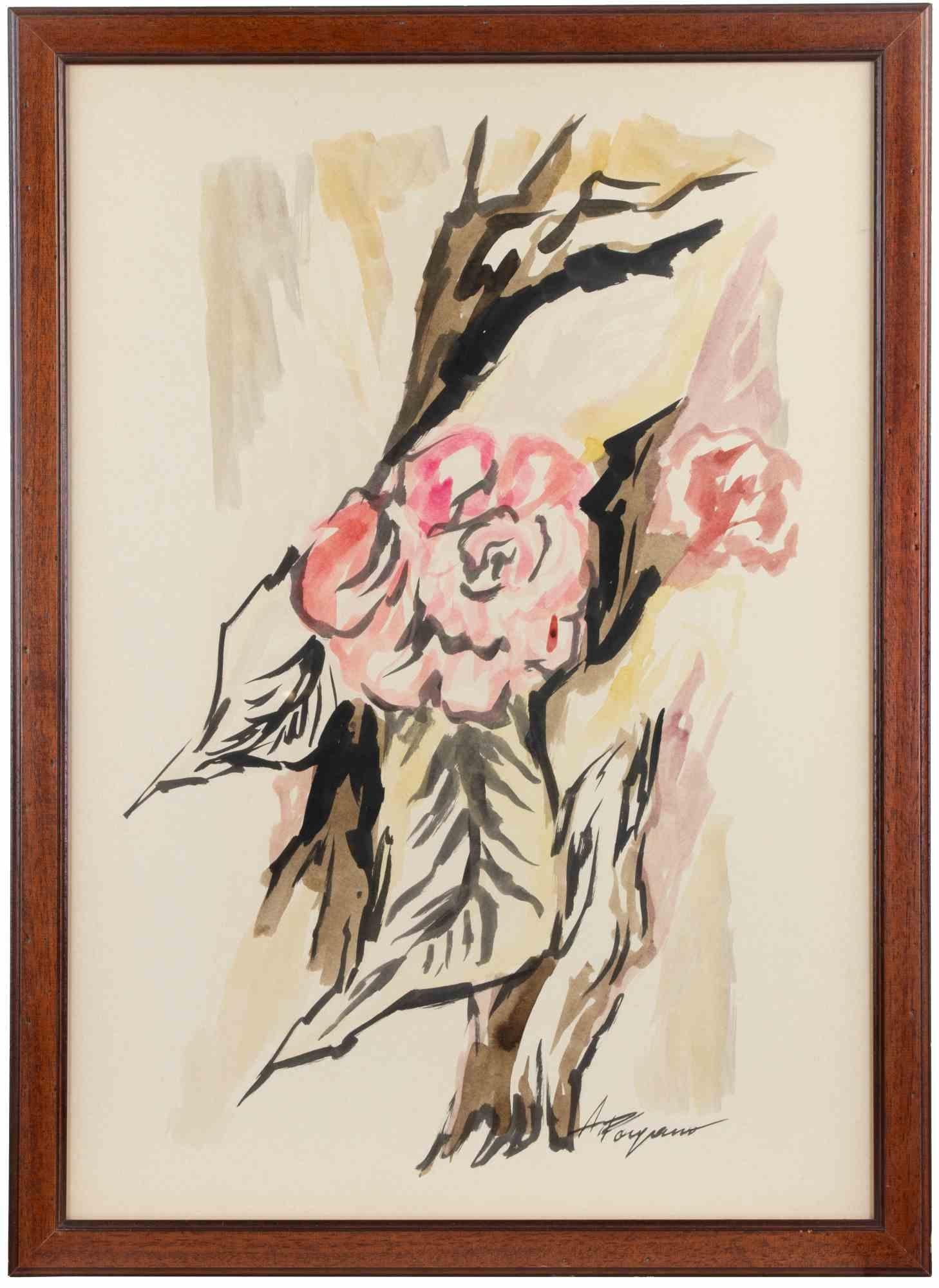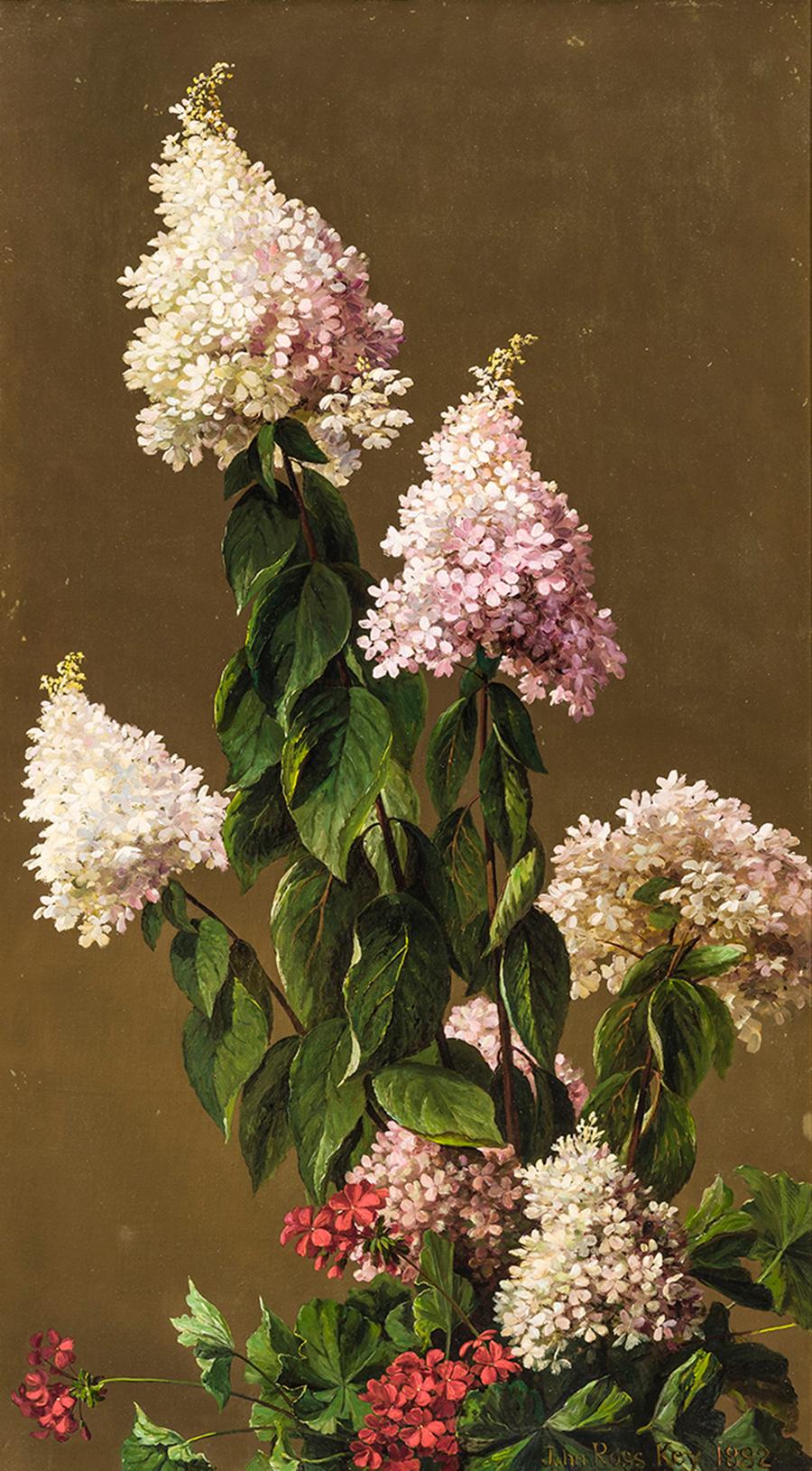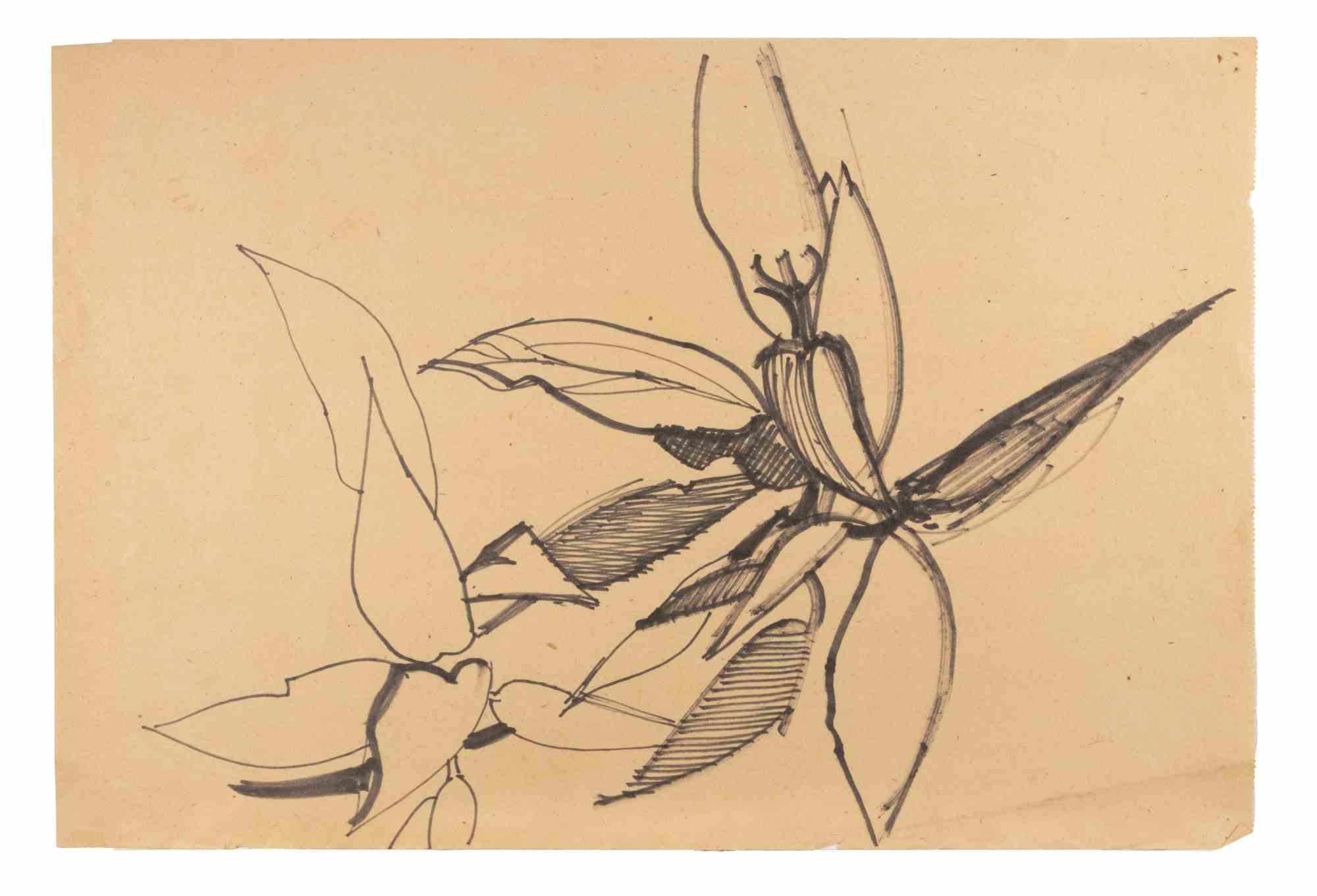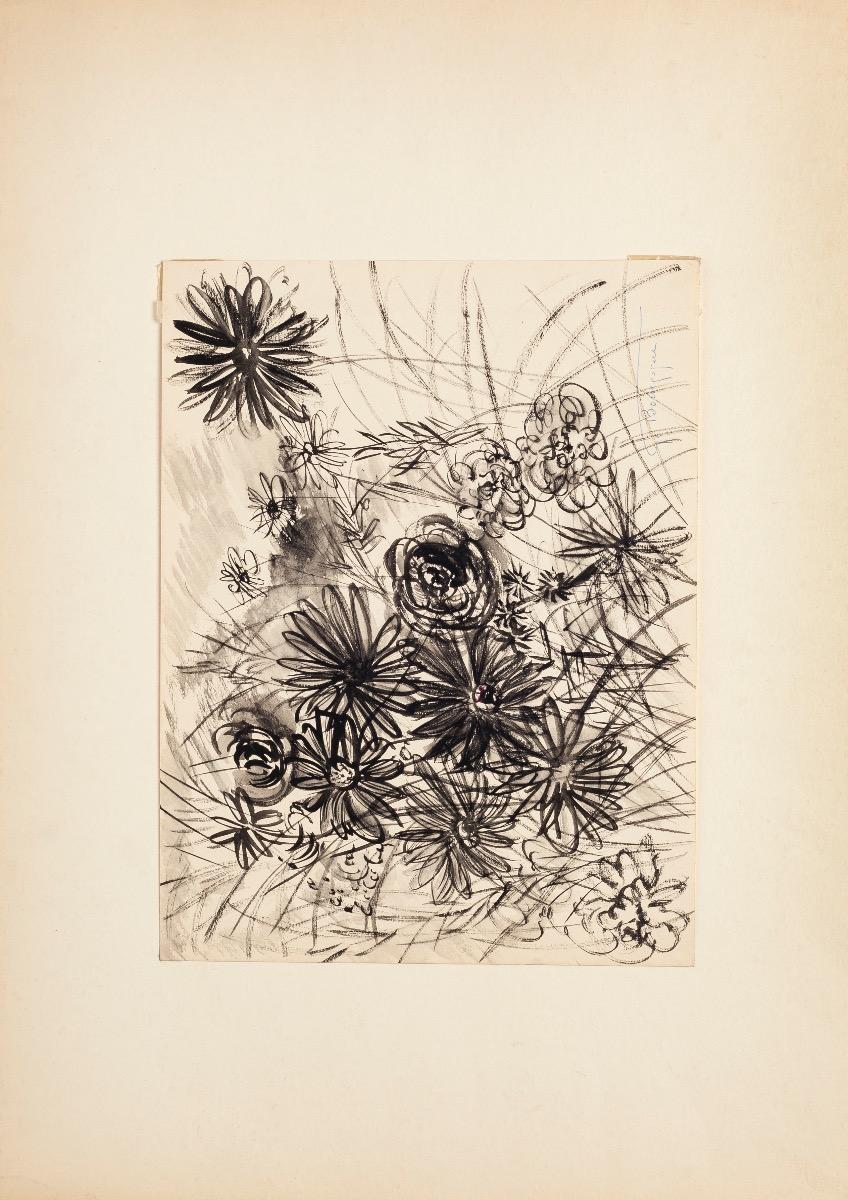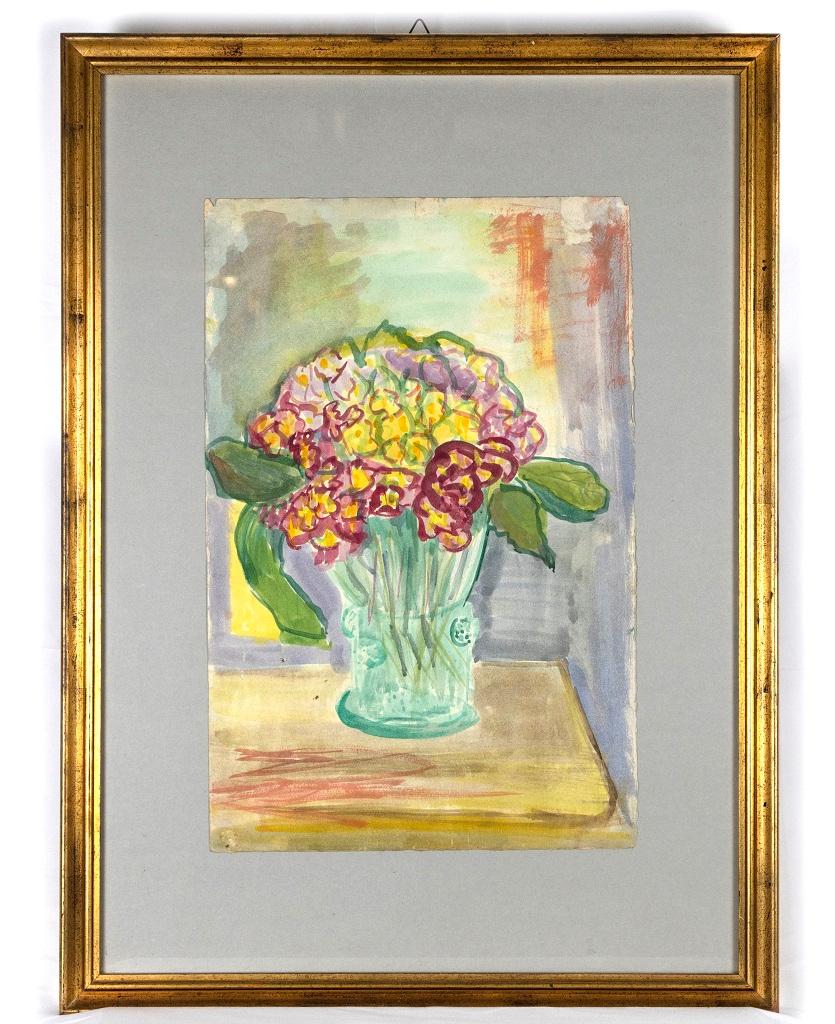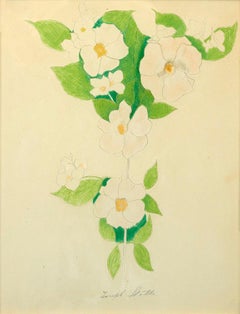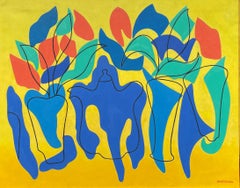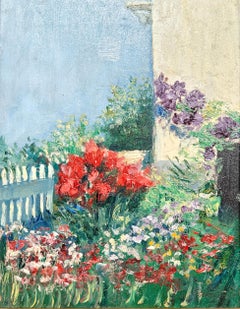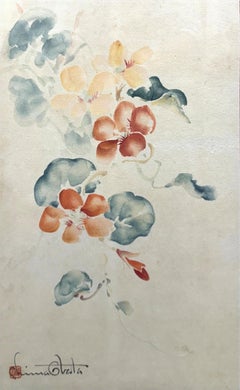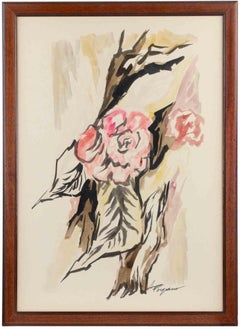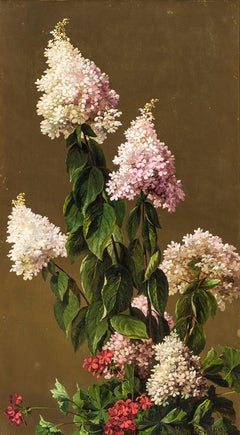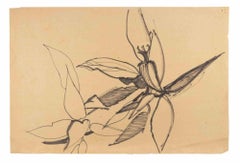Items Similar to "Hydrangeas, " Walter Inglis Anderson, Mississippi Southern Illustrator, Flowers
Want more images or videos?
Request additional images or videos from the seller
1 of 7
Walter Inglis Anderson"Hydrangeas, " Walter Inglis Anderson, Mississippi Southern Illustrator, Flowerscirca 1950
circa 1950
$22,500
£17,090.59
€19,694.15
CA$31,685.57
A$35,128.14
CHF 18,461.21
MX$429,910.85
NOK 230,561.74
SEK 216,405.26
DKK 147,004.62
About the Item
Walter Anderson ( American, 1903 - 1965)
Hydrangeas, circa 1950
Mixed media on paper
11 x 8 1/2 inches
Provenance:
Luise Ross Gallery, New York
Private Collection, New Jersey
Acquired from the estate of the above, 2021
Walter Anderson firmly believed that quality art was an important part of life and should be made available to everyone. As he said, "There should be simple, good decorations, to be sold at prices to rival the five-and-ten." Noticing that only poor quality art was available in stores and little was available for children, he resolved to make art which could be reproduced easily and sell inexpensively — linoleum block prints. This technique enabled him to provide affordable, quality art.
The technique of linoleum block printing is a simple concept; however, it requires much skill and talent to actually produce memorable art. Anderson purchased surplus "battleship linoleum," thicker than ordinary linoleum with a burlap backing for better support, to create his blocks. During the mid-1940s, he created almost 300 linocuts working in the attic of the sea-side plantation house, Oldfields, his wife's family home in Gautier. Masses of linoleum chips accumulated at the foot of the attic stairs as he often worked night and day. He began with sketching out a design directly on the linoleum. Once he had carved the image into the surface, he used the back of faded, surplus stock wallpaper that a friend sent him, laying long strips on top of the inked linoleum. A roller made of sewer pipe filled with sand served as his press. When the print was completed, he often colored it by hand with bold strokes and vivid colors. The prints were sold at Shearwater Pottery, the family business, for a mere dollar a foot.
But "what about a well-designed fairy tale for a child's room?" he asked himself. Since there was a lack of affordable art for children, much of his work with linoleum blocks focused on subjects for children. He depicted fables and fairy tales ranging from Arabian Nights, to Germany and the Grimm Brothers' Rapunzel, to the French story of The White Cat, to the Greek tales such as Europa and the Bull, and to tales from China, India, and other cultures. Anderson also created "mini" books featuring the alphabet and Robinson Cat. The blocks are not only alive with the story being depicted, but they are also filled with designs taken from Best-Maugard's Method for Creative Design. Swirls, half-circles and zig-zag lines fill every available space on the linoleum block making them come alive and capture their audience.
But fairy tales, children's verses and the "mini" books, consisting of about 90 blocks, were not the sole subject of Anderson's linoleum block prints. In total, he created approximately 300 linoleum blocks with subjects ranging from coastal flora and fauna, coastal animals, and sports and other coastal activities. Anderson even created linoleum blocks to be used to print tablecloths and clothing, some worn by his own children. Color and subjects of the linoleum block prints were not the only things that got them noticed.
In 1945 when Anderson was creating these prints, the standard size of linoleum block prints was only 12 by 18 inches. These small dimensions were due to the common size of the paper available and the restrictions made by national competitions. Since Anderson used wallpaper and was not concerned with competitions, he was able to have creative freedom and make huge prints.
Anderson felt that the art available in five-and-dime stores not only was short on quality, but short on size. He decided to make large prints that hung like vertical scrolls or horizontal over-mantels. Therefore, he made many of his prints 60 to 100 inches in length or height by approximately 19 inches (to fit the wallpaper strips). According to Carole E. Thompson in Walter Anderson: Prints from Mississippi, the scale of Anderson's prints has made him the first American artist to create linoleum block prints on such a large scale.
By 1949, Anderson had an exhibition of his linoleum block prints, drawings, a few ceramics, and some wood sculptures at the Brooklyn Museum in New York. According to correspondence, the museum was interested in the prints of such works as King Arthur and Billy Goats Gruff. Anderson wrote of the Brooklyn Museum showing of the fairy tale block prints, "Fairy tales have been used so often as sedatives that it is usually forgotten that they are also explosions… small explosions that are so identified with the life of man that they stimulate without destroying life." He wrote to the curator about his concerns for art reaching the people: "I hope that you will be able to reach the people who cannot afford to pay a great deal for works of art but still have an appetite for beauty and the imaginative world of fairy tales." In saying this, Anderson reinforced his belief that art should be available to everyone.
Walter Anderson was a visionary with many mediums. Whether with murals, watercolors, painted pottery or linoleum block printing, his desire was to reach the people, for he strongly believed that art enhanced people's lives.
- Creator:Walter Inglis Anderson (1903 - 1965)
- Creation Year:circa 1950
- Dimensions:Height: 17.75 in (45.09 cm)Width: 15.25 in (38.74 cm)
- Medium:
- Movement & Style:
- Period:
- Condition:
- Gallery Location:New York, NY
- Reference Number:1stDibs: LU184129925182
About the Seller
5.0
Platinum Seller
Premium sellers with a 4.7+ rating and 24-hour response times
Established in 2022
1stDibs seller since 2022
120 sales on 1stDibs
Typical response time: <1 hour
- ShippingRetrieving quote...Shipping from: New York, NY
- Return Policy
Authenticity Guarantee
In the unlikely event there’s an issue with an item’s authenticity, contact us within 1 year for a full refund. DetailsMoney-Back Guarantee
If your item is not as described, is damaged in transit, or does not arrive, contact us within 7 days for a full refund. Details24-Hour Cancellation
You have a 24-hour grace period in which to reconsider your purchase, with no questions asked.Vetted Professional Sellers
Our world-class sellers must adhere to strict standards for service and quality, maintaining the integrity of our listings.Price-Match Guarantee
If you find that a seller listed the same item for a lower price elsewhere, we’ll match it.Trusted Global Delivery
Our best-in-class carrier network provides specialized shipping options worldwide, including custom delivery.More From This Seller
View All"Flowers" Joseph Stella, Vibrant Modernist Flower Composition on Paper
By Joseph Stella
Located in New York, NY
Joseph Stella
Flowers
Signed lower center
Crayon and pencil on paper
13 1/4 x 10 1/4 inches
Stella was born June 13, 1877 at Muro Lucano, Italy, a mountain village not far from Nap...
Category
Early 20th Century Modern Figurative Drawings and Watercolors
Materials
Paper, Crayon, Pencil
"Untitled" Albert Heckman, Still Life, Floral Abstracted Modernist Composition
By Albert Heckman
Located in New York, NY
Albert Heckman
Untitled, circa 1950
Signed lower right
Oil on canvas
25 1/4 x 32 1/4 inches
Albert Heckman was born in Meadville, Western Pennsylvania, 1893. He went to New York City to try his hand at the art world in 1915 after graduating from high school and landing a job at the Meadville Post Office. In 1917, at the age of 24, Heckman enrolled part-time in Teachers' College, Columbia University's Fine Arts Department to begin his formal art education. He worked as a freelance ceramic and textile designer and occasionally as a lecturer at the Metropolitan Museum of Art. In the early 1920s, at the age of almost 30, he graduated with a Bachelor of Arts degree from Columbia Teachers College. He was especially impacted by his instructor at Columbia, Arthur Wesley Dow.
After graduating, he was hired by the Teachers' College as a Fine Arts instructor. He stayed with Columbia Teachers' College until 1929, when he left to attend the Leipzig Institute of Graphic Arts in Leipzig, Germany. Isami Doi (1903-1965), who was born in Hawaii, was arguably his most impressive student at Columbia. Doi is now regarded as one of the most prominent artists hailing from Hawaii. Heckman became an active member and officer of the Keramic Society and Design Guild of New York in the 1920s as part of his early commercial art career. The Society's mission was to share knowledge and showcase textile and ceramic design exhibits.
In 1922, Heckman married Florence Hardman, a concert violinist. Mrs. Heckman's concert schedule during the 1920s kept Albert and Florence Heckman apart for a significant portion of the time, but they spent what little time they had together designing and building their Woodstock, New York, summer house and grounds. A small house and an acre of surrounding land on Overlook Mountain, just behind the village of Woodstock, were purchased by Albert and Florence Heckman at the time of their marriage. Their Woodstock home, with its connections, friendships, and memories, became a central part of their lives over the years, even though they had an apartment in New York City.
Heckman's main artistic focus shifted to the house on Overlook Mountain and the nearby towns and villages, Kingston, Eddyville, and Glasco. After returning from the Leipzig Institute of Graphic Arts in 1930, Mr. Heckman joined Hunter College as an assistant professor of art. He worked there for almost thirty years, retiring in 1956. Throughout his tenure at Hunter, Mr. Heckman and his spouse spent the summers at their Woodstock residence and the winters in New York City. They were regular and well-known guests at the opera and art galleries in New York. Following his retirement in 1956, the Heckmans settled in Woodstock permanently, with occasional trips to Florida or Europe during the fall and winter. Mr. Heckman's close friends and artistic career were always connected to Woodstock or New York City. He joined the Woodstock art group early on and was greatly influenced by artists like Paul and Caroline Rohland, Emil Ganso, Yasuo Kuniyoshi, Andre Ruellan, and her husband, Jack Taylor.
Heckman operated a summer art school in Woodstock for several years in the 1930s with support from Columbia University, where these and other Woodstock artists gave guest lectures. The Potter's Shop in New York City hosted Mr. Heckman's first art show in December 1928. The exhibit received some positive reviews from critics. The American Institute of Graphic Arts chose the plate of "Wehlen, Saxony" as one of the "Fifty Prints of the Year in 1929." There were sixteen etchings displayed. The remaining plates depicted scenes in Saxony, Germany, while five of the plates were based on scenes in Rondout, New York.
Heckman started switching from etching to black and white lithography by the early 1930s. A lifelong admirer of Heckman's artwork, Mr. Gustave von Groschwitz organized a significant exhibition of Heckman etchings and lithographs at the Ferargil Gallery in New York City in 1933. The exhibition traveled to the Stendahl Galleries in Los Angeles (May 1933), the Charles Lessler Gallery in Philadelphia (May 1933), J.L. Hudson in Detroit (June 1933), and Gumps in San Francisco (July 1933). Together with his early etchings, the exhibition featured brand-new black and white lithographs depicting scenes in and around Woodstock as well as "A View from Tudor City...
Category
1950s Abstract Figurative Paintings
Materials
Canvas, Oil
"A Sunny Corner" Eugenie M. Heller, Impressionist Garden Landscape In Bloom
Located in New York, NY
Eugenie M. Heller
A Sunny Corner, circa 1900
Signed lower right
Oil on board
10 1/2 x 8 1/2 inches
Eugenie M. Heller (1867 - 1952) was active/lived in New York, Massachusetts.
Heller studied with Weir, Whistler, Amen-Jean, Grasset and Rodin. Eugenie Heller...
Category
Early 1900s American Impressionist Figurative Paintings
Materials
Oil, Board
"Nasturtiums" Chiura Obata, Japanese American, Red and Blue Delicate Flowers
By Chiura Obata
Located in New York, NY
Chiura Obata
Nasturtiums, circa 1940
Signed and stamped lower left
Watercolor on paper
15 x 9 5/8 inches
Born in the Okayama prefecture of Japan, Chiura Obata was adopted by his uncle, an artist. As a child he was trained in ink painting, and at 14 he was apprenticed to the painter Murata Tanryo in Tokyo. He also studied with Kogyo Terasaki and Goho Hasimoto.
In 1903, Obata moved to San Francisco and began working as an illustrator for The New World and The Japanese American, two of the city's Japanese newspapers. He also did work as a commercial designer. Obata helped establish the East West Art Society in San Francisco in 1921, which sought to promote cross-cultural understanding through art. This goal was reflected in his embrace of the Nihonga style, which fused traditional Japanese sumi-e ink painting with the conventions of western naturalism.
He spent much of the 1920s painting landscapes throughout California, and among his favorite subjects were mountain landscapes. In 1927, he visited Yosemite and the Sierra Nevada, creating over a hundred paintings and sketches of the high country. Obata stayed in the USA until the death of his father in 1928.
Between 1928 and 1932, he worked in Tokyo as a painter and transformed his California landscape watercolors...
Category
1940s Modern Still-life Drawings and Watercolors
Materials
Paper, Watercolor
"Cardinal Flowers Still Life, June" Walter Gay, Red and White Floral Bouquet
By Walter Gay
Located in New York, NY
Walter Gay (1856 - 1937)
Cardinal Flowers Still Life, June, 1875
Signed lower left; dated on the reverse
Oil on board
24 3/4 x 7 1/8 inches
Provenance:
Private Collection, Brunswick, Maine
Born in Hingham, Massachusetts, Walter Gay became a painter who specialized in interiors, particularly those of eighteenth-century French buildings. His style was traditional, and he ignored the influences of modernist paintings he saw while studying in Paris beginning 1876. He remained in Europe the rest of his life.
In his compositions, the rooms are nearly always devoid of human presence but suggest that someone has been there. Many of his interiors are museum settings, and although he was not an impressionist, his work often had atmospheric effects.
When Gay died in 1937, he was described in The New York Times as the "Dean of American Painters in France," where he and his Matilda moved in 1876. His first paintings there were genre subjects and realistic views of peasant life in Britanny, but he tired of these works, which he called "pot boilers."
In the 1890s, he began his signature interiors, mostly rooms in fashionable houses of the Gays and their friends. Reproductions of many of these paintings were published in 1920 by Albert Gallatin, also a painter. The Gays, with a retinue of about twenty servants, loved old houses, and lived in an eighteenth-century apartment on the Left Bank in Paris from January through April and beginning 1904, in a chateau in the countryside at le Breau, near Fontainebleau. There they had 300 acres of grounds to roam.
In 1907, they purchased this chateau which became quite a showplace and where they entertained extensively. However, during World War II, when Matilda was living there as a widow, German soldiers occupied the chateau, ruining much of the structure and plotting the destruction of the country the Gays loved...
Category
1870s American Impressionist Still-life Paintings
Materials
Oil, Board
"Color Sketch, Shakespeare Garden" Jennie Brownscombe, circa 1890 Impressionism
Located in New York, NY
Jennie Brownscombe
Color Sketch, Shakespeare Garden, c. 1890s
Signed lower left
Oil on board
7 1/8 x 9 1/4 inches
The artist was born in a log cab...
Category
1890s American Impressionist Figurative Paintings
Materials
Board, Oil
You May Also Like
Flowers - Drawing - mid-20th Century
Located in Roma, IT
Flowers is a modern artwork realized by an unkown Artist of in the mid-20th Century.
Mixed colored watercolor.
Hand signed "A. Pagano" on the lower margin.
Includes frame
Category
Mid-20th Century Modern Figurative Drawings and Watercolors
Materials
Watercolor
Hydrangeas and Other Garden Flowers
By John Ross Key
Located in New York, NY
Signed (at lower right): John Ross Key 1882
Category
Late 19th Century American Realist Still-life Paintings
Materials
Canvas, Oil
Flowers - Drawing By Reynold Arnould - 1970
Located in Roma, IT
Flowers is a Black Marker Drawing realized by Reynold Arnould (Le Havre 1919 - Parigi 1980).
Good condition on a yellowed paper.
No signature.
Reynold Arnould was born in Le Hav...
Category
1970s Modern Still-life Drawings and Watercolors
Materials
Paper, Permanent Marker
Flowers Composition - China Ink and Watercolor by G. Bourgogne -Mid-20th Century
By Gustave Bourgogne
Located in Roma, IT
Flowers Composition is an original china ink and watercolor drawing on ivory-colorated paper realized by Gustave Bougogne (1888-1968).
In very good conditions. Image Dimensions: 24 ...
Category
Mid-20th Century Modern Still-life Drawings and Watercolors
Materials
Ink, Watercolor
Flowers - Original Watercolor on Paper by Caroline Hill - Mid-20th Century
By Caroline Hill
Located in Roma, IT
Flowers is an original artwork realized by Caroline Hill in the Mid-20th Century.
Original mixed colored watercolor.
Includes frame: 76 x 4.5 x 55 cm
The artwork represents a colo...
Category
Mid-20th Century Figurative Drawings and Watercolors
Materials
Watercolor
untitled (flowers)
Located in New York, NY
Focused on wildflowers spotted along rural roads in his native Minnesota, these paintings capture the delicate beauty of these native flowers against deep magenta backgrounds. Rangin...
Category
1990s Landscape Drawings and Watercolors
Materials
Paper, Watercolor
More Ways To Browse
Walter Design
Mid Century Painting By Anderson
E Thompson
Block Print Flowers
100 Dollar Art
Pottery Cat
Used Wood Stairs
Vintage Swirl Pottery
Poor Things
Linoleum Block Print
Carved Wood Goat
Vintage Greek Clothing
Linocut Flowers
White Bull Sculpture
Chinese Man Pottery
Arabia Pottery
Vintage Concepts Clothing
Zig Zag Sculpture
